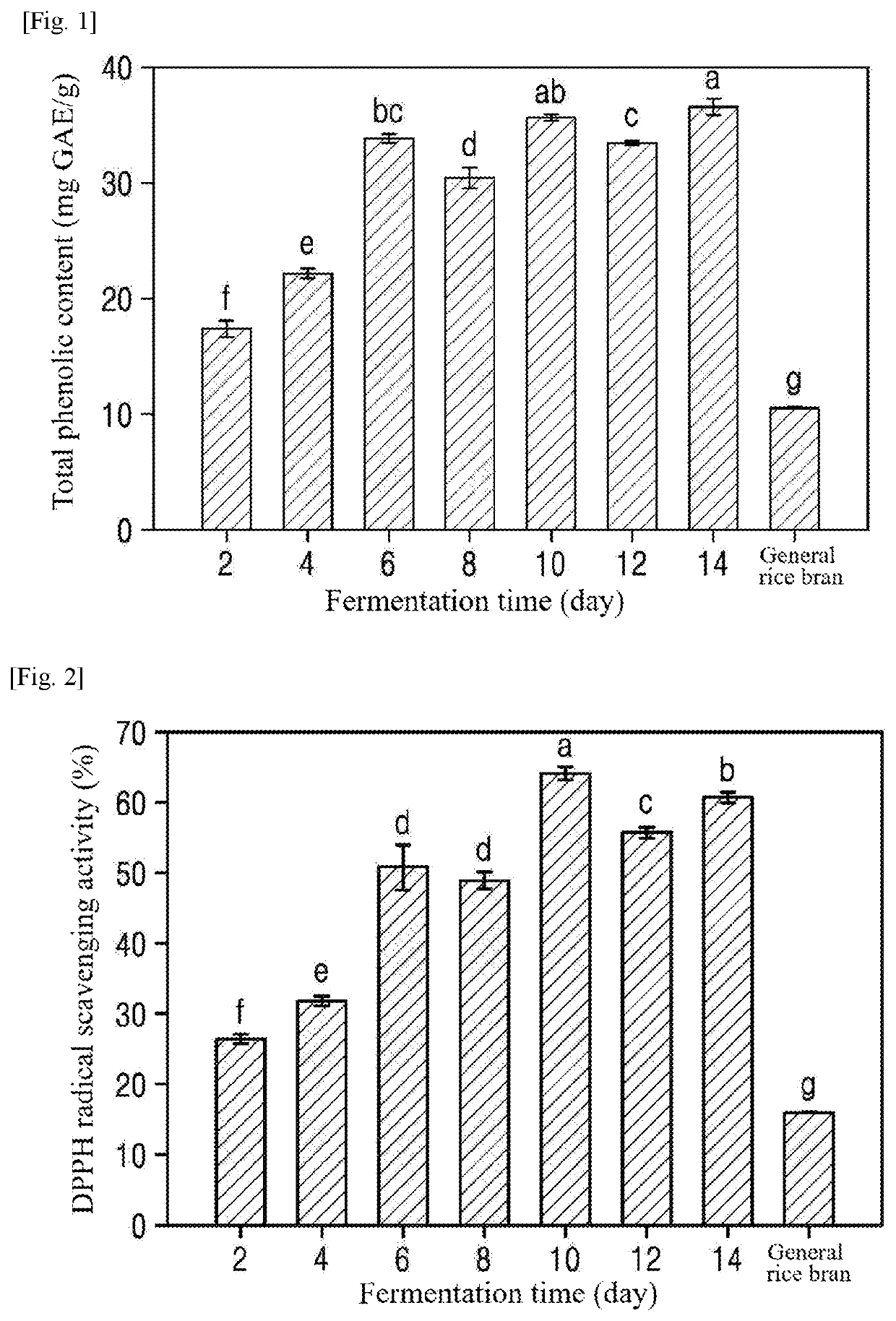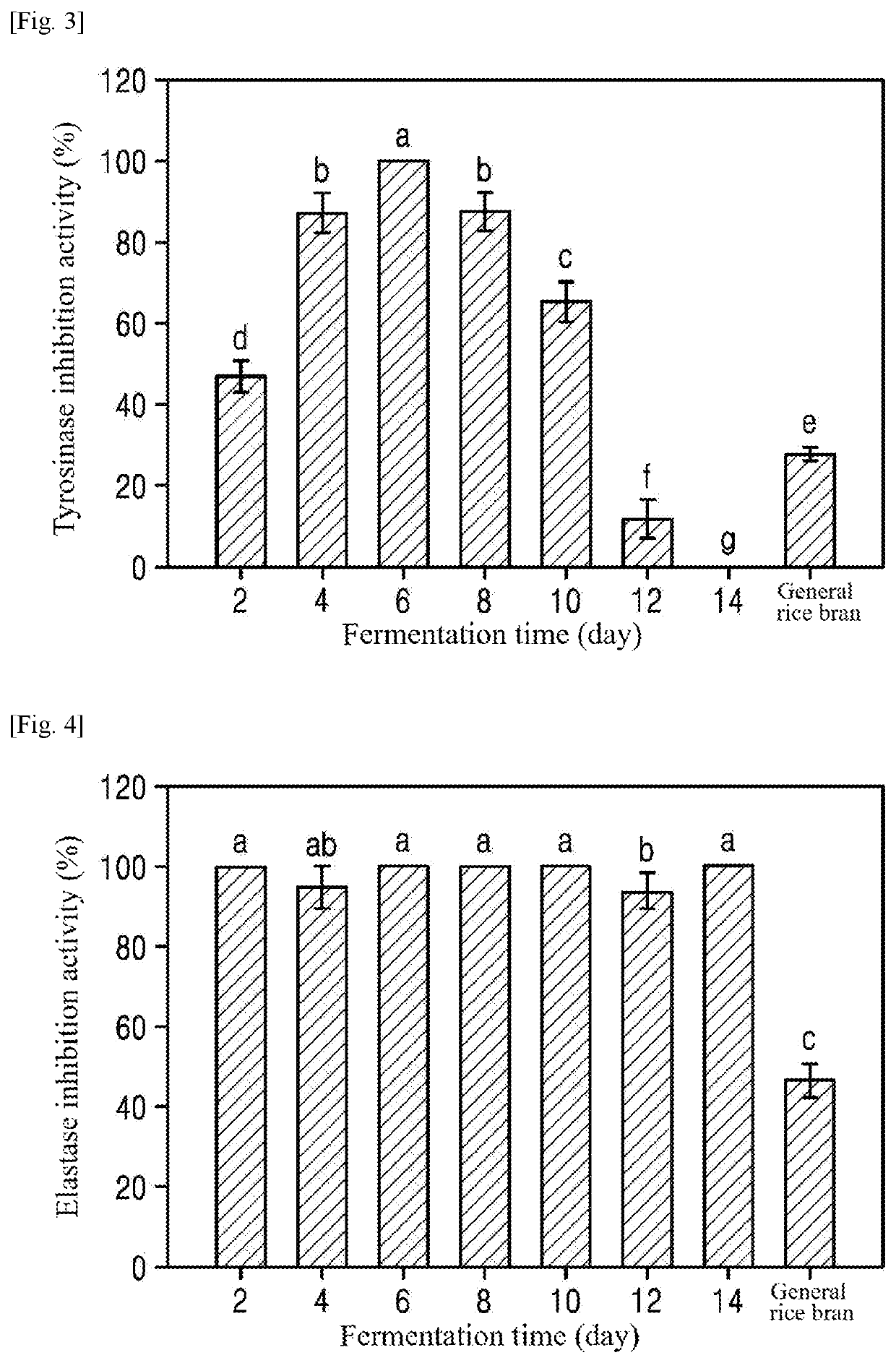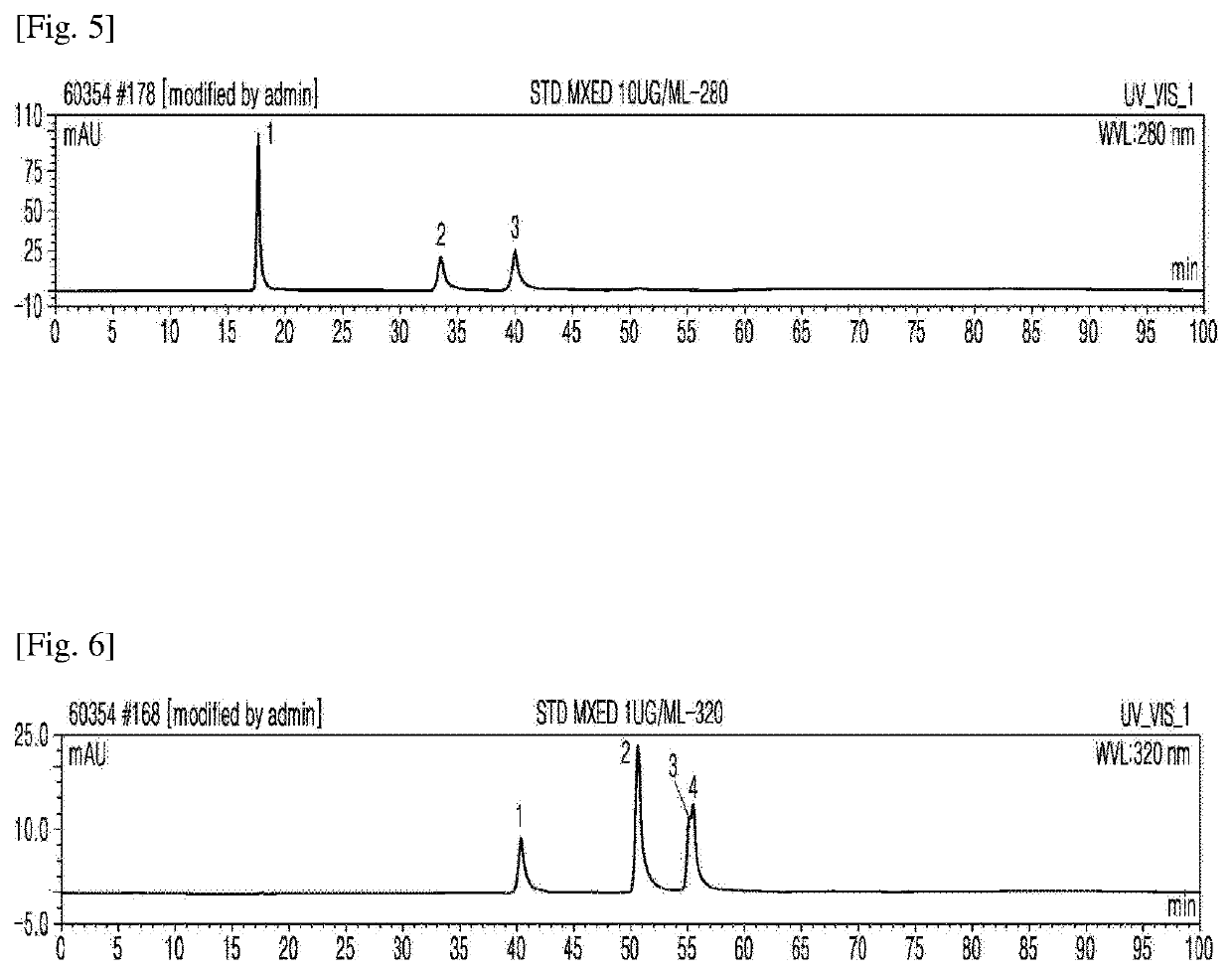Antioxidant, skin-whitening and wrinkle-reducing multifunctional cosmetic composition containing fermented rice by-product extract or fraction thereof as active ingredient
a multi-functional, anti-oxidant technology, applied in the direction of cosmetics, medical preparations, cosmetic preparations, etc., can solve the problems of skin aging, skin sagging and laxity, skin aging, and aging, and achieve significant skin whitening and anti-wrinkle effects, increase total phenolic content, and high antioxidant activity
- Summary
- Abstract
- Description
- Claims
- Application Information
AI Technical Summary
Benefits of technology
Problems solved by technology
Method used
Image
Examples
example 1
Preparation of Extract from Fermented Rice Bran
[0056](1) Preparation of Fermented Rice Bran
[0057]Aspergillus sojae KCCM 60354 was cultured in potato dextrose agar (PDA) until sporulation occurred (day 14). The spores were collected, washed twice, and stored at 80° C. for further use. Rice bran was mixed with water in a ratio of 1:1 (w / w) and sterilized using an autoclave at 121° C. for 20 min. The sterilized rice bran was transferred to a Petri dish. 1 part by weight of the fungal spores (1 ml spore solution (1 ×106 spores / ml)) were sufficiently mixed with 100 parts by weight of the rice bran (100 g of the rice bran). The mixture was incubated at 25° C. for 14 days. Samples were collected every 2 day during incubation and stored at 20° C. for further analysis.
(2) Preparation of Extracts From the Fermented Rice Bran
[0058]Each of the fermented rice bran samples collected at different incubation times was extracted with 95% ethanol, shaken at 100 rpm and 25° C. for 24 h, filtered, and ...
example 2
Preparation of Fractions of the Extracts from the Fermented Rice Bran
[0059]On day 6 of fermentation, the ethanol extract from the rice bran (FRB-D6: 95% ethanol) was stepwise fractionated with hexane, chloroform, ethyl acetate, butanol, and water in a ratio of 1:10 (v / v) to isolate active ingredients (FIG. 10). The hexane (FRB-H), chloroform (FRB-C), ethyl acetate (FRB-E), butanol (FRB-B), and water (FRB-W) fractions were collected, evaporated, and lyophilized for further experiments.
experimental example 1
Total Phenolic Content (TPC) Measurement
[0060]The total phenolic contents (TPCs) of the extracts from the fermented rice bran were measured by the modified Ainsworth and Gillespie method. Specifically, 200 μl of 10% (v / v) Folin-Ciocalteu reagent and 800 μl of 700 mM Na2CO3 were mixed with 100 μl of each of the extracts from the fermented rice bran. The mixture was allowed to stand at room temperature for 2 h. Thereafter, the absorbance of the mixture was measured at 765 nm using a spectrophotometer. The TPC was calculated using the gallic acid standard curve. The results are shown in FIG. 1.
[0061]As shown in FIG. 1, all extracts from the rice bran fermented by Aspergillus sojae showed higher total phenolic contents than general rice bran. The total phenolic content tended to increase with increasing fermentation time. Particularly, the total phenolic content of the extract from the rice bran fermented for 14 days (36.5±0.7 mgGAE / g) was found to be ˜3 times higher than that of genera...
PUM
 Login to View More
Login to View More Abstract
Description
Claims
Application Information
 Login to View More
Login to View More - R&D
- Intellectual Property
- Life Sciences
- Materials
- Tech Scout
- Unparalleled Data Quality
- Higher Quality Content
- 60% Fewer Hallucinations
Browse by: Latest US Patents, China's latest patents, Technical Efficacy Thesaurus, Application Domain, Technology Topic, Popular Technical Reports.
© 2025 PatSnap. All rights reserved.Legal|Privacy policy|Modern Slavery Act Transparency Statement|Sitemap|About US| Contact US: help@patsnap.com



